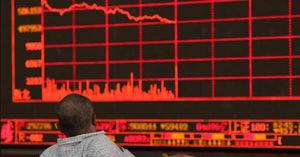Donald Trump has escalated tensions with China by threatening to impose an additional 50% tariff on imports from the country if it does not withdraw its retaliatory tariffs on U.S. goods by Tuesday, April 8, 2025. This announcement, made on Monday, April 7, 2025, comes amid a backdrop of significant market volatility, with global stock markets experiencing sharp declines for three consecutive days following Trump's initial tariff announcements.
During a press briefing at the White House, Trump reiterated his firm stance against China, stating, "If China does not withdraw its 34% increase above their already long-term trading abuses by tomorrow, April 8th, 2025, the United States will impose ADDITIONAL Tariffs on China of 50%, effective April 9th." This threat follows China's announcement of a 34% counter-tariff on U.S. imports, which is set to take effect on April 10, 2025.
The president's comments were made in a post on his social media platform, Truth Social, where he expressed his dissatisfaction with China's actions despite previous warnings. "Any country that retaliates against the U.S. by issuing additional Tariffs will be immediately met with new and substantially higher Tariffs," he stated. The potential implementation of these tariffs could bring the total levies on Chinese imports to an astonishing 104%, as they would stack on top of existing tariffs: a 20% levy already in place and the newly announced 34% tariff.
The ramifications of Trump's tariff threats are already being felt in global markets. The value of U.S. stock markets dropped sharply at the opening on Monday, with the FTSE 100 closing more than 4% down. In Asia, Hong Kong's Hang Seng Index plummeted by more than 13%, marking its largest one-day decline since the 1997 Asian financial crisis. Stocks of Chinese technology companies listed on U.S. exchanges, such as Alibaba and Baidu, also tumbled, reflecting investor concerns over the escalating trade war.
Alibaba's stock fell by 8% to $106.23, while U.S.-listed shares of Baidu dropped 2.5%. Other Chinese tech stocks, including JD.com and Tencent, similarly experienced declines. Analysts note that the ongoing trade war is weighing heavily on the sentiment of investors, who are increasingly worried about the potential for a prolonged conflict between the two economic giants.
In light of the escalating tensions, Trump has also indicated that negotiations with other countries regarding tariff rates will commence immediately. He mentioned meeting with Israeli Prime Minister Benjamin Netanyahu, who assured him that Israel would eliminate its trade imbalance with the U.S. and work towards removing trade barriers. Under Trump's "Liberation Day" policy, Israel is facing a 17% tariff starting April 9, 2025.
Ursula von der Leyen, the president of the European Commission, has proposed a "zero-for-zero tariff" deal, although she has also stated that the EU is prepared to respond with countermeasures if necessary. Trump has previously criticized the EU, claiming it was formed to harm U.S. trade interests.
As the situation unfolds, the implications of Trump's tariff threats extend beyond immediate market reactions. Economists warn that the potential for a full-blown trade war could have dire consequences for global economic stability. The U.S. currently faces a staggering $36 trillion debt, which Trump referenced while discussing the need for fair trade deals with other nations.
In the wake of these developments, both U.S. and Chinese policymakers are reportedly considering their next moves. China's leadership is reportedly discussing measures to stimulate its economy in response to the tariffs, as the country's tech sector braces for impact. The ongoing trade war has already stifled growth in various sectors, and analysts are closely monitoring how both countries will navigate this complex landscape.
As the deadline for China's response approaches, the world watches closely. The stakes are high, and the potential for further escalation looms large. With Trump's firm stance on tariffs and China's commitment to retaliate, the situation remains fluid, and the outcome could reshape global trade dynamics.
In conclusion, the trade war between the U.S. and China has entered a critical phase, with Trump's latest threats adding fuel to an already volatile situation. As markets react to the news, both countries face the challenge of finding a resolution that addresses their economic concerns while avoiding further escalation.






